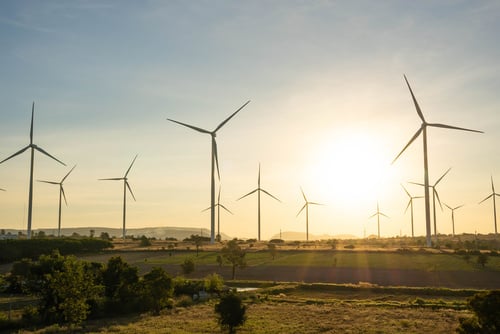If you’re starting to get to grips with your organisation’s carbon footprint then the scope 1, 2 and 3 emissions will have entered your thinking. Greenhouse gas emissions (GHG emissions) are classified into these three scopes according to the Greenhouse Gas Protocol (GHG Protocol), the most widely used standard for GHG accounting.
Scope 1, 2, and 3 emissions represent direct and indirect emissions from an organisation's activities, value chain, and upstream and downstream activities, respectively. Here we will break down exactly what each one is and how best to start reducing them.
What are scope 1 emissions?
Scope 1 emissions are direct GHG emissions from sources that are owned or controlled by an organisation. As these emissions occur within an organisation's boundaries, it’s easier to measure and monitor them. Examples of scope 1 emissions include:
- Fuel combustion from vehicles, boilers, and other stationary sources
- Fugitive emissions from industrial processes, such as leaks from equipment and pipelines
- Process emissions from chemical reactions, such as the production of cement and steel
What are scope 2 emissions?
Scope 2 emissions are indirect GHG emissions from the generation of purchased electricity, steam, heating, and cooling consumed by an organisation. While these emissions occur outside an organisation’s boundaries, it is still indirectly responsible for them by buying and using the energy.
Scope 2 emissions can be calculated by multiplying your organisation's energy consumption by the average emission factor for the electricity grid in the region where the energy is consumed. Emission factors are publicly available and are calculated by dividing the total emissions from electricity generation by the total electricity generated.
What are scope 3 emissions?
Scope 3 emissions are all indirect emissions that occur in the upstream and downstream activities of an organisation’s value chain. Despite the emissions taking place elsewhere from its premises, they are still linked to its activities and how carbon is consumed across its supply chain.
As these emissions occur outside an organisation's boundaries and are not directly controlled by it, scope 3 emissions are the most complex and challenging to measure and manage as they involve a wide range of activities and stakeholders. They also will predominantly represent the biggest component of an organisation’s carbon footprint, sometimes as much as 90%. For this reason, calculating scope 3 emissions comes with challenges and opportunities. Scope 3 emissions examples include:
- Purchased goods and services
- Transportation and distribution
- Waste disposal
- Business travel and employee commuting
- Leased assets
- Investments
Why are scope 1, 2, and 3 emissions important?
Scope 1, 2, and 3 emissions are important because they provide a comprehensive view of an organisation's GHG footprint. Locating and understanding the source of each emission enables your organisation to get a fuller picture of the carbon consumption it has an influence over. This then provides the opportunity to reduce emissions and flex greater control over its environmental impact.
By understanding the different emission types and their sources, organizations can develop and implement effective strategies to reduce their overall emissions.
How to reduce scope 1, 2, and 3 emissions
There are several ways to reduce Scope 1, 2, and 3 emissions, with some of the most common ways including:
Scope 1 emissions
- Reducing fuel consumption
- Investing in renewable energy
- Capturing and utilising fugitive emissions (leaks and other abnormal releases of gases or vapours)
Scope 2 emissions
- Using more efficient energy sources
- Purchasing renewable energy
- Improving energy efficiency
- Investing in on-site renewable energy generation
Scope 3 emissions
- Working with suppliers to reduce their emissions
- Choosing more sustainable transportation and distribution options
- Reducing waste
- Encouraging employees to reduce their commute emissions
Implementing these can help organisations reduce their GHG footprint, mitigate climate change and save money on energy costs. While these individual actions will lower your emissions, you will need to be logging and tracking your emissions to understand the impact it is having on your organisation’s carbon footprint. Comprehensively reporting on your carbon consumption, something you can do through carbon reporting software such as our Pulse Net Zero platform, enables you to do this.
As we’ve mentioned, scope 1, 2, and 3 emissions are important because they provide a clear view of an organisation's GHG footprint. By understanding the types of emissions and their sources, you can develop and implement effective strategies to reduce your organisation's overall emissions. This is particularly useful if you want to develop a carbon reduction plan to work towards net zero. There are several ways to reduce Scope 1, 2, and 3 emissions, but of the three types, scope 3 emissions are usually the most significant percentage of a carbon footprint and the most complex to track and lower. This is why prioritising scope 3 emissions reduction is often the most rewarding for an organisation.
Want to know more about how carbon reporting can help an organisation like yours? Check the guide below.







